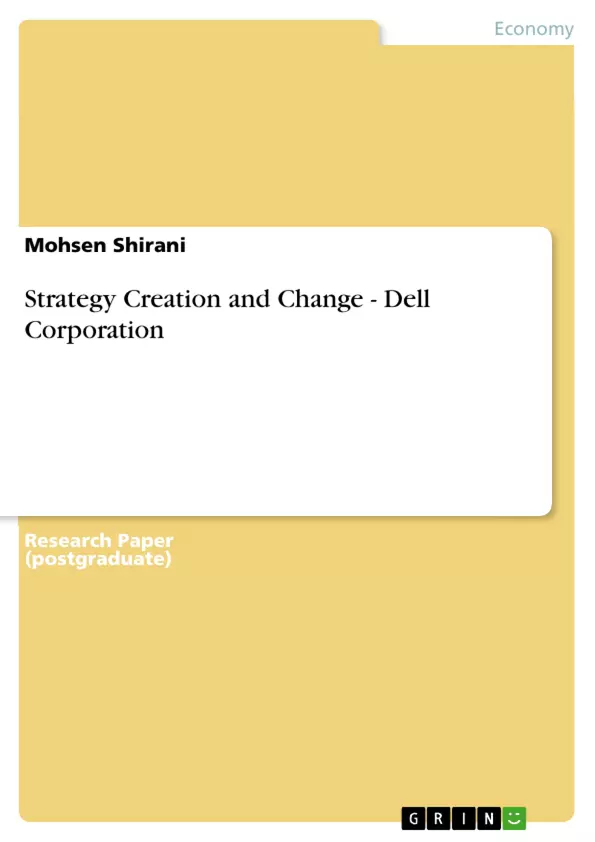This research project is based on a study made on Dell Computer Corporation. The task given is to assume the role of advisors to the CEO. The first step to take is to analyze the market situation for the company and also investigate the competition. Afterwards in order to understand the organizational characteristics and capabilities SWOT and TOWS analysis are implemented.
Based on the above tools the key problem area which Dell Inc is facing is recognized. Mostly based on TOWS analysis the possible strategic alternatives are connected to the problem areas.Furthermore with using company’s vision, mission and tools such as Scenario planning and Ranking options the highest priority strategy is chosen.
Inhaltsverzeichnis (Table of Contents)
- Introduction
- Company history
- Organization
- Product Portfolio
- Customer segments
- SWOT analysis
- TOWS analysis
- Business model
- Industry capabilities and characteristics
- PESTEL
- Competition Environment
- Organization capabilities and characteristics
- Strategic choice & recommend actions
- Key problems: Key problems & strategic alternatives & Arguments
- Strategic alternatives: Strategic alternatives
- Discussion and Arguments of the strategic options
- Importance of acquisitions
- Resource allocation
- Reply to Murphy
- Implementation of strategy
- Structure & Culture
- Processes
- References
- Appendixes
- Scenario planning
- Ranking options
- CEO Access/Execution responsibility chart
- Dell market position
- Organizational chart
- Dell's product portfolio
Zielsetzung und Themenschwerpunkte (Objectives and Key Themes)
This research project aims to provide strategic advice to the CEO of Dell Computer Corporation, Michael Dell, by analyzing the market situation, competition, and organizational capabilities. The objective is to identify key problem areas facing Dell and propose strategic alternatives to address them, ultimately leading to a recommended strategy and implementation plan.- Market analysis and competitive landscape
- Organizational capabilities and limitations
- Strategic alternatives and their implications
- Implementation of the recommended strategy
- Future considerations and potential changes
Zusammenfassung der Kapitel (Chapter Summaries)
- Introduction: This chapter sets the stage for the research project, outlining the objectives and methodology. It introduces the context of Dell Computer Corporation and the challenges it faces.
- Company history: This chapter provides a historical overview of Dell Inc., highlighting its founding, growth, and key milestones. It explores the evolution of its business model, including the direct-selling method, and the challenges faced in recent years.
- Organization: This chapter examines the organizational structure of Dell, focusing on its leadership, board of directors, and committees. It also discusses the company's culture and its emphasis on decentralized decision-making.
- Product Portfolio: This chapter examines Dell's product portfolio, including its hardware, software, and services offerings. It discusses the company's strategy of providing system solutions to customers and the role of acquisitions in expanding its product portfolio.
- Business model: This chapter explores Dell's business model, specifically its direct-selling method. It highlights the advantages and challenges of this model and examines the company's transition towards indirect selling in certain markets.
Schlüsselwörter (Keywords)
The main focus of this research project lies on the strategic analysis of Dell Computer Corporation. Key topics include market analysis, competitive landscape, organizational capabilities, strategic alternatives, implementation planning, and future considerations. Key terms encompass direct-selling, product portfolio, organizational structure, SWOT analysis, TOWS analysis, and scenario planning.- Quote paper
- Mohsen Shirani (Author), 2010, Strategy Creation and Change - Dell Corporation, Munich, GRIN Verlag, https://www.grin.com/document/191900



